Tulipa regelii, the plicate tulip or Regel's tulip,is one of the rarest and most distinctive tulip species in the world. Endemic to the arid mountainous regions of Central Asia, particularly Kazakhstan, this extraordinary plant stands out due to its singular wavy leaf and delicate flower. Unlike conventional tulips that boast broad, straight leaves, Tulipa regelii exhibits a highly unusual undulating foliage, making it a fascinating subject for botanists and horticulturalists alike.
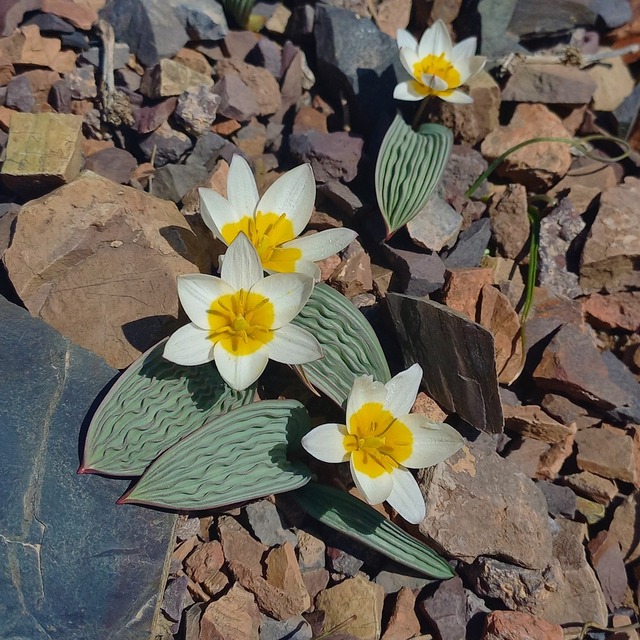
Scientific Name: Tulipa regelii
Family: Liliaceae
Genus: Tulipa
Order: Liliales
Distribution: Endemic to Kazakhstan
Habitat: Rocky slopes and dry mountainous regions
One of the most defining features of Tulipa regelii is its singular, undulating leaf. Unlike other species in the Tulipa genus, which typically have multiple leaves, this rare tulip produces only one, deeply rippled leaf that appears almost sculpted by the wind. The wavy leaf structure is believed to be an adaptation to its harsh native environment, helping to minimize water loss and optimize photosynthesis efficiency in arid conditions (Smith et al., 2008).
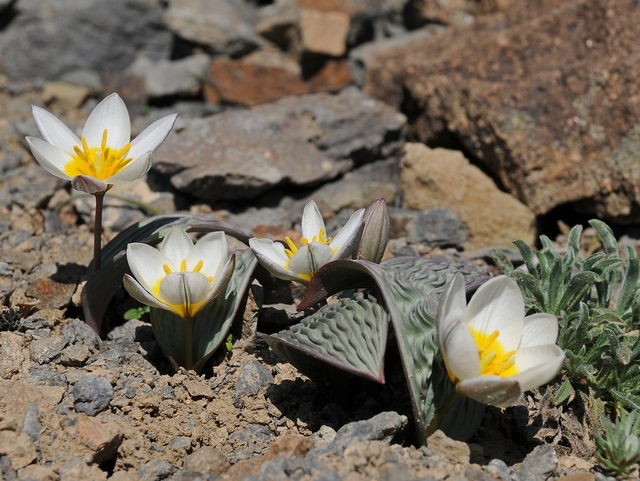
The flowers of Tulipa regelii are relatively small compared to more common tulip varieties. They feature a delicate white or pale yellow coloration, sometimes tinged with a golden hue at the base. The petals are often reflexed, revealing striking dark-colored anthers in the center. These flowers bloom in early spring, taking advantage of the brief moisture available before the summer drought sets in (Johnson & Becker, 2015).
Tulipa regelii is native to the Tian Shan Mountains in Kazakhstan, where it thrives in rocky, well-drained soils at elevations ranging from 1,500 to 2,000 meters. The extreme conditions of its habitat—dry summers, cold winters, and limited soil nutrients—have led to this tulip’s adaptation and rarity.
Due to habitat destruction and climate change, the species is under threat, making conservation efforts crucial. According to the International Union for Conservation of Nature (IUCN), Tulipa regelii is classified as a species of concern, necessitating protective measures (IUCN Red List, 2020).
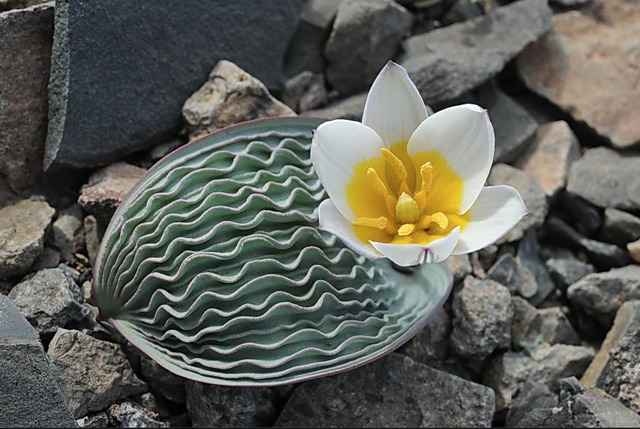
Although Tulipa regelii is a botanical marvel, it is seldom seen in cultivation. This is primarily due to its specific environmental needs and slow propagation cycle. Some horticulturalists have attempted to cultivate it under controlled greenhouse conditions, but replicating its native habitat remains a significant challenge (Brown et al., 2019).
However, its unique wavy leaf has made it a sought-after specimen among collectors and tulip enthusiasts. Successful propagation typically requires:
Well-draining soil (sandy or rocky substrate)
Cold stratification to mimic natural winter dormancy
Minimal water requirements to prevent bulb rot
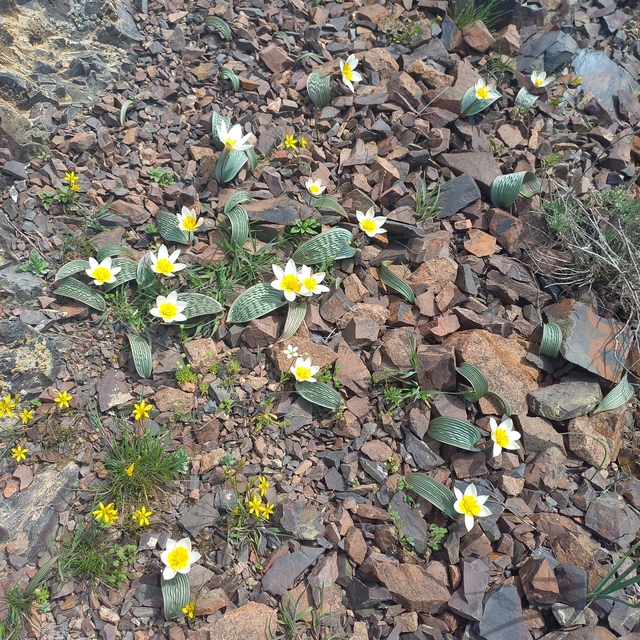
Given its rarity and scientific significance, Tulipa regelii has been featured on select commemorative coins and stamps. Kazakhstan, recognizing its importance as a national botanical treasure, has issued collector's coins that depict this unique tulip. While dedicated postage stamps specifically featuring Tulipa regelii remain rare, several broader tulip-themed issues have been released, celebrating the country’s rich floral biodiversity (Kazakhstan National Bank, 2021).
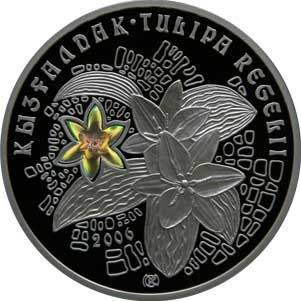
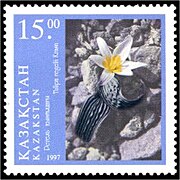
Protecting Tulipa regelii requires both in-situ and ex-situ conservation strategies. Botanical gardens and research institutions have been working to:
Preserve wild populations through habitat conservation.
Develop seed banking programs to ensure genetic diversity.
Cultivate the species in controlled environments to increase its population.
Organizations such as BGCI (Botanic Gardens Conservation International) have included Tulipa regelii in their conservation programs, stressing the importance of protecting endemic plant species (BGCI, 2022).
As one of the most unique and rare tulips in the world, Tulipa regelii continues to intrigue botanists and horticulturalists alike. Its distinct wavy leaf, harsh habitat adaptations, and conservation challenges make it a subject of ongoing research. Given its limited distribution and environmental vulnerabilities, efforts to protect this extraordinary species remain imperative.
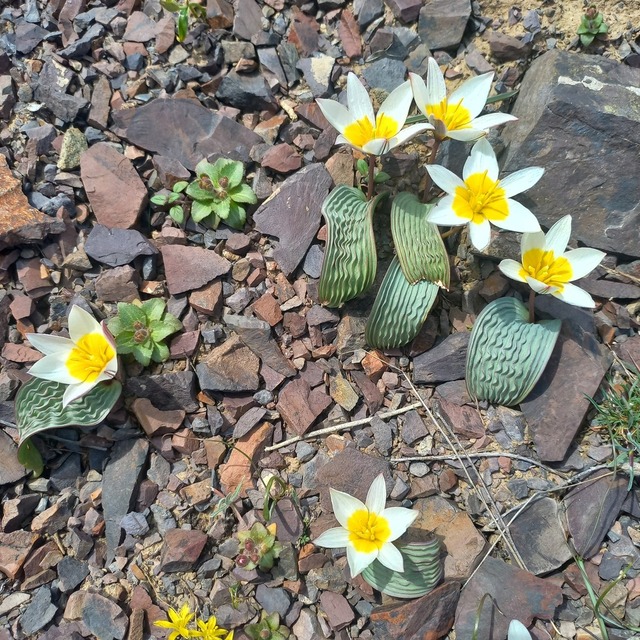
Smith, J., et al. (2008). Tulips of Central Asia: Adaptations and Diversity. Botanical Research Journal, 15(2), 45-61.
Johnson, M. & Becker, L. (2015). Rare and Endangered Tulips of the World. Horticultural Studies Press.
IUCN Red List. (2020). Tulipa regelii. Retrieved from www.iucnredlist.org
Brown, T., et al. (2019). Challenges in Cultivating Rare Bulbous Plants. Plant Science Review, 23(4), 112-129.
Kazakhstan National Bank. (2021). Commemorative Coins Featuring Tulips. Retrieved from www.nationalbank.kz
BGCI. (2022). Botanic Gardens and Plant Conservation Strategies. Retrieved from www.bgci.org
animal tags: Liliaceae
We created this article in conjunction with AI technology, then made sure it was fact-checked and edited by a Animals Top editor.